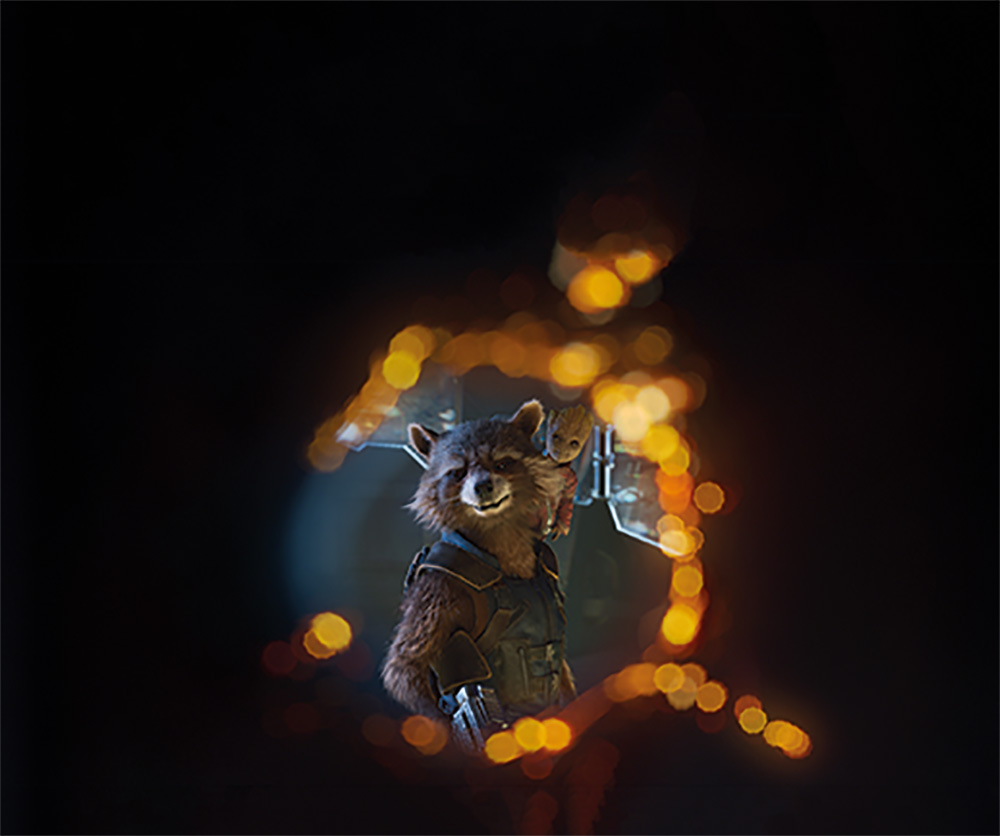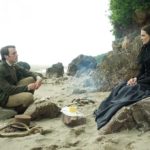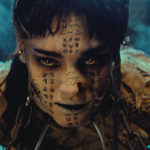
Dysfunctional Family Values
Posted on Oct 5, 2017 by Julian Mitchell
The RED VistaVision cameras used were developed in collaboration withMarvel and DOP Henry Braham
The RED VistaVision camera was pushed through development to be used on the new Guardians of the Galaxy movie. DOP Henry Braham wanted a particular crispness and a colour for this strange family drama
Guardians of the Galaxy Vol. 2 is about humanity; it’s a family drama that just happens to be set in this fantastical space world. Fundamentally it’s about learning to be loved and family relationships. That might sound a bit like ‘Californian speak’, but if you view it that way you can let the emotions flow while the VFX amaze.
We last spoke with DOP Henry Braham when he shot one of the first digital movies, Flyboys. He was looking for a camera that could help with the loading times of film. Panavision’s Genesis was a prototype camera, a bit like the RED VistaVision, but back then he didn’t think resolution was hugely important.
“We chose to shoot Flyboys on the Panavision Genesis,” he says as he takes up the story. “That was driven by the visual idea for the movie and this one is kind of exactly the same. That’s what’s fascinating about moviemaking these days, you’re really free to do anything and you can be really ideas driven. I’m pretty sure that’s because the means of distribution and projection has changed. As long as there was film projection you went to the cinema and you had to project film. A lot of the way you made a movie was prescribed, even ten years ago you would start by saying ‘Well, is this an anamorphic movie, a spherical movie, are we going to shoot it on Kodak or Fuji?’ There are some small choices around the edges of that, but that pretty much guided the process of making a movie.
 The Stabileye in use.
The Stabileye in use.
“Now because movies are projected digitally there are no rules about how you make a movie. You can shoot it on an iPhone – it makes no difference, the choices are down to the filmmaker. I think that sets filmmaking free. It enables you to really look forward. There are plenty of instances where you may want to shoot your movie on film but that’s a choice entirely driven by the nature of the material, creative choices and the process.
“What’s interesting about Guardians is it’s the first ever major release to be shot on RED VistaVision 8K. But we came to that because it was entirely driven by the visual idea and by the process that director James Gunn wanted to use to make his movie,” he explains.
“My role is to put the director’s personality on to the screen so watching how he works and listening to what is important to him is crucial. Through that process in the case of Guardians on one hand it was interesting shooting this in large-format, 65mm digital, because it’s a very, rich, expansive movie. Visually it’s very complex and there’s a huge amount of detail in that. On the other hand it’s about truth and the way people are, so very early on in the process when we were talking about what the movie is about it became clear that what he really likes to do is to use his script as a springboard for developing performances. He wants to catch the spontaneity of those performances.”
Move the Vista
 For DOP Henry Braham the physicality of the camera was very important.
For DOP Henry Braham the physicality of the camera was very important.
Traditionally what directors might want to do is to shoot multiple cameras and set the cameras outside the area in order to allow the cast the freedom to work within it. That’s a completely valid way of doing it but not what this director was after. He wanted something much more connected and immersive than that. “That seemed very exciting to me,” says Henry. “It was almost like we wanted to shoot the movie handheld in a documentary style. As a scene would develop you might start at point A but might end up at point X, but in that process the camera had to keep up with whatever was happening.
“On one hand it’s a very rich, very big scale movie and on the other hand, we wanted to make it like a documentary. So I went away to think about how to resolve these two things and to me the physicality of the camera was very important. I had been doing some work with a gyro stabilised remotely controlled miniature head called Stabileye. It’s kind of revolutionary because it allows you to do precisely what I am describing,” continues Henry, “as in to hand-hold the camera, but from an audience’s point of view, it’s 100% stable and therefore you’re not aware of the camera. The two most flexible documentary ways of shooting are handheld or Steadicam – both great ways to shoot, but the difficulty using them on the big screen is that they make you very aware of the camera and it becomes a presence in the story and not in a good way.
“I showed James how it worked on the phone one day and he instantly realised its significance. That meant that what I needed was a small camera physically, but I needed a large-format camera. So what I wanted was an equivalent of an ALEXA 65 camera with the really beautiful image that it produces, but I wanted it the size of a Hasselblad. So that’s why I went to see Jared Land at RED. I had a very good experience of RED shooting The Legend of Tarzan and they had been very open to making some adjustments on the RED DRAGON to make it suitable to shoot that film. When I saw him he put a black box on the table and said ‘Here’s a very early prototype of something’.
“We ended up doing a lot of development of the VistaVision with them. It was a kind of collaboration between RED, myself, the VFX team and the production team at Marvel – with everyone getting what they needed out of the design. RED then went and built six or seven cameras for the movie based on all that work in terms of colour science, the physical optical nature of the camera, all those types of things.
“Ironically and unusually nearly 85% of the movie is shot on one camera, because of the way we could move the camera on the Stabileye, which is incredibly versatile. You can handhold it, you can put it on a scaffold bar, you can hang it on a wire – all of these things free up how you’re going to shoot a movie.”
Resolution is great

“It’s great news to have such resolution for VFX but it’s also new and different. So there is a process of learning how to handle it,” says Henry. He tested a great deal of cameras from the ALEXA 65 to the 6K DRAGON to the ALEXA Mini, all the cameras that you think you might look at for this type of movie.
“In that process one of the things that I learned was that resolution was very significant. Subsequent to that, the pixel size is relevant too, because the smaller the pixel size not only the higher the sensitivity but the finer the image that you’re capturing. The downside is mostly to do with the bokeh; also it can be challenging in terms of focus but a really shallow depth-of-field can make you aware of the camera again. That’s not a style of shooting that works for me. It’s also why I tend to project dailies because the nuances of focus you really see on the big screen. It’s impossible to see on the small screen. Television makes everything sharper than it really is so you’re denying yourself a lot of choices.”
The lens options for VistaVision at the time were not huge and Henry initially looked at making a set of lenses for the movie. But the Panavision 70 Series, made for a camera that never actually came to fruition, offered a geometry that really worked for a camera with this sensor size. “There was a really good range and the guy who designed them, Dan Sasaki, offered to tune them in order to get the crispness that I was after,” explains Henry. “I wanted a crisp image because of the nature of this Guardians’ world. The richness came from the colour but colour is very complicated to photograph; it sounds silly but it’s true. What I was looking for to make that colour work was to bring a crispness in to the image. The consequences of getting the colour wrong for the VFX team on a film like this were huge; it had to be absolutely perfect. If there are inconsistencies or technical aberrations then those people who are working on the same shot will have a problem. The source material has to be absolutely right before anyone else starts working on it.”
SHED time

“I like to work exactly the same in film as in digital,” says Henry. “I expose the set with a light meter so I know precisely what’s been captured on the chip. I don’t do any on-set monitoring as I find it very distracting and very misleading. Also I like to concentrate on filmmaking and not post-production. I take the data out of the cameras and I set up a laboratory in the editorial department; for this movie SHED in California were taking that role.”
There were two things that were happening in that lab; firstly, the data transfer and secondly, colour management. “I worked with a colourist who is experienced in making all the colour choices in post-production. So I’ll grade the dailies with the colourist every day and that grade becomes the template and will show everybody what the visual intent of the movie is,” he continues. “So that when the VFX teams come to work on it they’ve got clear guidance as to where those images are intended to go. That information is tracked with the material they receive so when we get to do the final DI we can call up that grade as the point where we start from.
“What’s important to me is how you build the grade, what the shape of the black and shadow areas is, the shape of the highlights… You can entirely design your own film stock, that’s the process that works for me.”
SHED specified an entirely codex-based workflow from on-set through post, VFX pulls and archiving. The procedure involved loading 1TB RED MINI-MAGs into a Codex S-Series Vault near the set. After a check, the data was cloned to an 8TB Codex Transfer Drive. A pair of Codex XL-Series Vaults at SHED Atlanta then processed the R3D RAW files with LUTs applied and rendered all the necessary deliverables through Codex Production Suite. ACES was also used to manage the colour and ensure consistency.
The original 8K camera data, including metadata such as the accelerometer data and any white-balance changes, were tracked and updated along with the editorial ALE files and tied together using Codex Backbone, which provides reports and facilitates the flow of information. Codex Backbone was also used to manage and provide all VFX pulls from the database created automatically during production.
“We used a lot of Phantom shots for the slow motion and Phantom is often very difficult to ‘match grade’. But SHED really spent the time and got that right before we started shooting,” says Henry
“From an audience point of view, Guardians is really exciting to look at. It almost has a slight 3D quality, but in a very pleasing way. I think that’s a reason to go and see a movie in as high a resolution as possible. It bodes well for the future of filmmaking, the business side included. It’s an exciting time to be photographing movies. These formats are changing fast, and they’re really good. They are what you make of them – if you’re fearful, you might not have such a good experience. But if you embrace them and make them work for you, they’re fantastic.”














